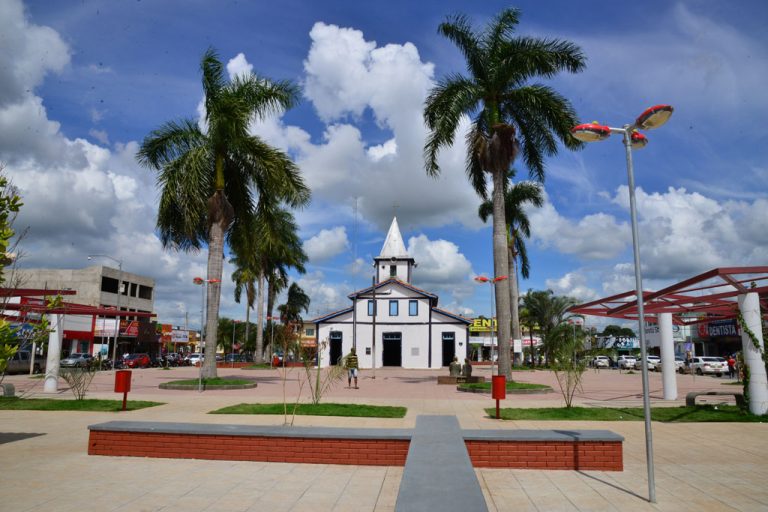The municipality celebrates its 101st anniversary, attracting large private investments, such as the Antares Polo Aeronáutico, which will house the largest and most modern airport infrastructure in the Midwest, transforming the region into an important logistics hub for the country.
Aparecida de Goiânia celebrates its 101st anniversary in a context of strong economic and social growth, attracting large private investments and a strong flow of highly qualified labor. To give you an idea, in the period between the last two IBGE censuses, 2010 and 2022, the municipality gained more than ten thousand inhabitants per year. In 12 years, its population jumped from 380 thousand inhabitants to more than half a million (500,760), according to the official preview of the last Census. From the economic point of view, this growth was even stronger. Still according to the IBGE, the city’s GDP jumped from R$ 3.8 billion in 2009, to 14.4 billion in 2019, a growth of 279% in a decade, leveraging the municipality to the third largest GDP in Goiás.
Industry, services and logistics, uniting these three economic vocations of the city, Aparecida is moving towards a fourth: to be the first “aerotropolis” in the Midwest. The term aerotropolis is used to designate cities that develop in an integrated way and in synergy with large airport infrastructures. Its achievement is due to the construction of the modern aeronautical hub that is being implemented through Antares Polo Aeronáutico.
“Antares will be a business airport and aeronautical hub that will be able to serve companies from all segments of general aviation, such as logistics for e-commerce, executive aviation, regional aviation, agro aviation, air taxi, hangar rental, aeromedical services , aircraft maintenance, pilot training, aircraft factories and others”, lists Rodrigo Neiva, commercial director and one of the partner-entrepreneurs of Antares.
The city was chosen to receive the development, due to its strategic location: it is a 1 to 2 hour flight from 65% of the Gross Domestic Product (GDP) of Brazil, and up to 4 hours of flight from the rest of the country. “This geographical position makes Antares a stopover and maintenance point for Brazilian general aviation”, he explains. In addition, the city also has connectivity with other modes of transport, such as road, it is already cut by several highways, such as the BR-153 or Rodovia Transbrasiliana, today the main connection between the Mid-North of Brazil and the Center-South . “With Antares, the entire region becomes a complete logistics hub”, he concludes.
Qualified jobs and new urban equipment
Aparecida is already a city that has a large industrial plant, seven large industrial centers in full operation and with many areas available to receive more companies from the most varied segments. With the implementation of the Antares project, Aparecida de Goiânia is preparing for a new and even more consolidated development cycle, since the airport infrastructures also induce new companies to increase the demand for qualified labor.
“Airports and all aviation-related services always add high technology, whether in the operation of the aircraft themselves, in air security monitoring services or in the maintenance of planes and other aircraft, and this attracts a large contingent of highly qualified labor, as pilots, programmers, engineers and other professionals. In other words, it is an audience that will move the city’s economy even further”, he assesses.
He also recalls that the development radiates around the airport, creating a true airport city with new services and amenities, such as shops, hotels and entertainment. “It also communicates with many international or transport-related businesses that are based in the nearby areas. These centers are economic powers that generate jobs, income and infrastructure”, he explains and illustrates with the example of the city of Campinas (SP), after the inauguration of the cargo airport.

About Antares
With investments in the order of R$ 100 million, the Antares Polo Aeronáutico project is spearheaded by the Goiás companies Tropical Urbanismo, Innovar Construtora, CMC Engenharia, BCI Empreendimentos e Participações and RC Bastos Participações. Occupying an area of 209 hectares and capable of receiving planes the size of a Boeing 737-800, Antares promises to be a landmark in airport infrastructure, becoming a logistics hub for transporting people and cargo throughout Brazil.
With its works starting in July 2021, the aeronautical hub is being built in the east of the city of Aparecida de Goiânia, on the banks of East-West Axis 4 and BR-153. The runway for landings and takeoffs, the main infrastructure of the development, will be 1,980 meters long and 45 meters wide, will have PCN 43, a Pavement Classification index that will guarantee structural conditions for the operations of large aircraft, such as the Boeing 737- 800. Antares airport will start operations with VFR and may even reach an IFR.
The Antares project will be built in five phases and the forecast is that the first will be completed by the end of 2024, when the first operations of the aeronautical hub should begin. The first stage of the project will have the runway already in operation, the boarding and landing terminal, parking and 72 lots from 1,000m² to 1,500m² with all the necessary infrastructure, such as electricity, water supply system, asphalt paving and an area closed with monitored concierge. As an incentive, Antares offers 20 years of tax incentives on the Services Tax (ISS), Urban Territorial Property Tax (ITU) and Urban Land and Property Tax (IPTU).



